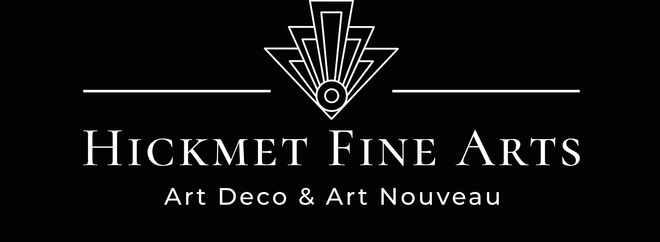Wonderful late 19th Century Art Nouveau French bronze figure of a seductively draped female figure representing, in allegorical form, Nature revealing her secrets to Science, a fitting theme for the late nineteenth century. The interest in nature literally apparent in the work of the Barbizon school and the Impressionists is here portrayed in the symbolic manner favoured by Salon sculptors. The erotic overtones of the figure's pose and the richly varied colours of the bronze surface are characteristic of the opulent taste of the late nineteenth century, while the flowing linear patterns of the drapery and the curving outline of the figure suggest the forms of Art Nouveau.
This fine sculpture is cast in bronze and highlighted in a silver and gilded finish enhancing the textural surface of the subject. Raised on an integral bronze base, signed E Barrias and with Susse Freres foundry stamp and further inscription.
Sorry, this item has been sold. If you would like information about similar items please contact us on 07971850405 or make an enquiry via email here
ADDITIONAL INFORMATION
Height: 24 cm
Width: 10 cm
Depth: 7 cm
Circa: 1900
Condition: Excellent original condition
Foundry: Susse Freres Paris
Materials: Bronze
SKU: 9230
ABOUT
Louis Ernest Barrias (French, 1841 ~ 1905) was born in Paris into a family of artists. His father was a porcelain-painter, and his older brother Félix-Joseph Barrias a well-known painter. Louis Barrias also started out as a painter, studying under Léon Cogniet, but later took up sculpture with Pierre-Jules Cavelier as teacher. In 1858 he was admitted to the École nationale supérieure des Beaux-Arts in Paris, where his teacher was François Jouffroy. In 1865 Barrias won the Prix de Rome for study at the French Academy in Rome. Barrias was involved in the decoration of the Paris Opéra and the Hôtel de la Païva in the Champs-Élysées. His work was mostly in marble, in a Romantic realist style indebted to Jean-Baptiste Carpeaux.
In 1878 he was made a knight of the Legion of Honour, an officer in 1881, and a commander in 1900. Barrias replaced Dumont at the Institut de France in 1884 then succeeded Cavelier as professor at the École des Beaux-Arts. In 1900-03 he served on the Council for the National Museums. Among his students were Josep Clarà, Charles Despiau, Henri Bouchard, and Victor Segoffin. Louis Barrias was very influenced by the Art Nouveau style, which was prominent in art during the fin-de-sidle in France. The voluptuous women figures used in many of his sculptures are a product of this time and style. Nature and the erotic was, also, used often in this type style of art, which is seen in many of Barrias’s works including, “Nature Unveiling Herself Before Science.” This piece was made in 1899, when this style was popular.
Nature Unveiling Her Secrets to Science by Louis Barrias
The statue was commissioned in 1889 to decorate the new medical school in Bordeaux. A young woman, the allegory of nature, is slowly lifting the veils she is wrapped in. When he had finished the first version in white marble for the school, Barrias designed a second statue in polychrome, for the ceremonial staircase of the Conservatoire des Arts et Métiers, in Paris. He used marble and onyx from the newly reopened quarries in Algeria.
Carefully carved to enhance the decorative qualities of the materials, the various parts of the statue play on the veins in the ribboned onyx for the veil, the mottled effect of the red marble for the robe, the preciousness of lapis lazuli for the eyes and malachite for the scarab and coral for the mouth and lips.The overall effect is surprisingly rich. The work belongs to a major revival of polychrome sculpture launched by archaeological discoveries and illustrated fifty years earlier by Cordier.
















